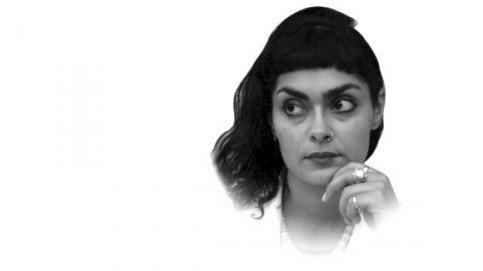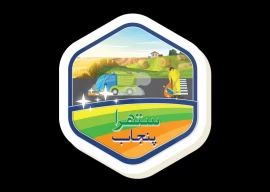
The event is a testament to the fact that the fashion industry in Pakistan is strong and is getting stronger because of the determination and passion of those involved in it, and around it. It becomes obvious from FPW, that the old guard of Pakistani fashion have been getting encouragement, promotion and backing for many, many years despite bombs, coups, civil unrest and all-around mayhem. Also the new guard has been allowed to grow, learn and be nurtured such as the young designers from the Pakistan Institute of Fashion Design and the Asian Institute of Fashion Design. Designers like Nauman Arfeen with his Raven collection, Ubaid Sheikh with his bat-wing kurta, Zarmeenah Khan, with her native American influenced take on our traditional dabka salma, Aziz Ali with his baroque collection, or Sanam Agha, with unique camouflage print variations.
Fashion in Pakistan is not reactionary, as the west may have us believe — it is a force of nature, an inevitability. More than any other art form, fashion has been dragging us kicking and screaming into our future for decades. Fashion has gotten away with more than any other art form in Pakistan from the pioneering stylising of Tariq Amin to right now. Thus, the current state of insecurity and unrest is just another psycho-scape for fashion to play its drama to, like it has always done.
When Rizwanullah presented his ‘Depression Chic,’ for example, in stark blacks and whites, I felt I was witnessing a poignant moment in our cultural history. As his models walked down the ramp bearing chains, it was if they were saying, despite constraints, there is hope; we are all trying to break free, together. His collection was clean, emphatic and eloquent and seemed to capture the zeitgeist, if the rolling cheers and all-around lovefest was anything to go by.
The piece de resistance in terms of designers, addressing the current climate outside of their world of fashion was Umar Sayeed’s collection taking the work of Sadequain as inspiration. Pakistani art and culture have never fully accepted the works of our darker artists such as Manto, despite our sinister, violent past and present. Umar Sayeed’s collection, disturbing, risky and dynamic, was a breath of fresh air for it addressed the fear, sorrow and pain that Pakistan actually undergoes every day. This was the second poignant moment .
The soundtrack to this collection was the ‘kalaam’ of Sadequain put to an eerie music, the models walked in a zombie-like trance looking for all the world like our many dead come back to life, ravens, black and sleek adorned their shoulders and heads. The cuts and structure of the gowns brought to mind names such as YSL and Comme De Garcon. Fashion, however, was irrelevant here — this was us facing ourselves, our past, present but hopefully not our future. Our culture jumped forward with this show and society as a whole leaps ahead with the advent of Fashion Pakistan Week. Fear, what fear? Fear the fashion, it’s not going anywhere.
1729080111-0/BeFunky-collage-(63)1729080111-0-405x300.webp)
1730838202-0/Trump-(1)1730838202-0-165x106.webp)















COMMENTS (2)
Comments are moderated and generally will be posted if they are on-topic and not abusive.
For more information, please see our Comments FAQ